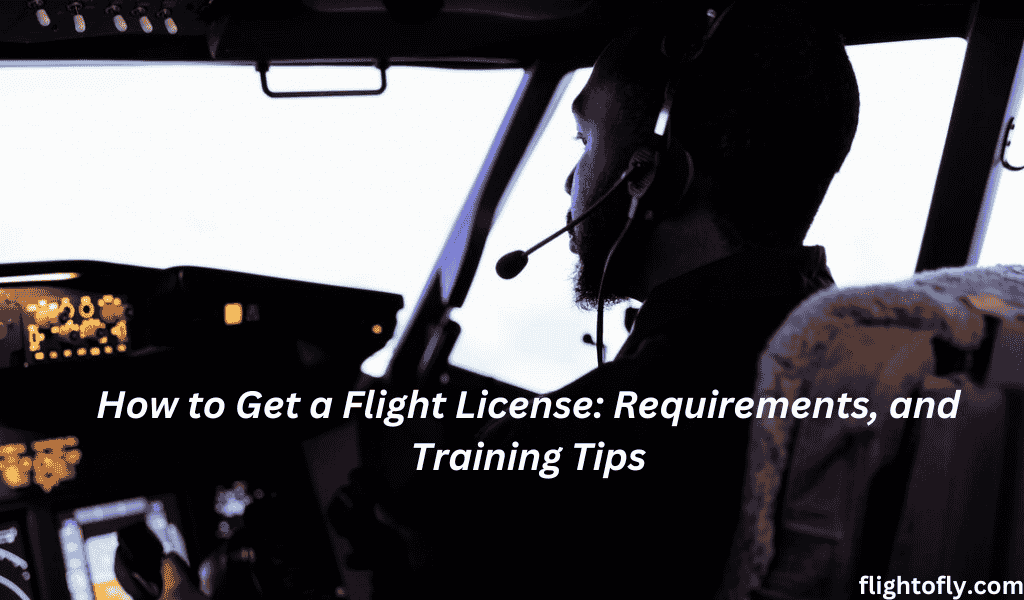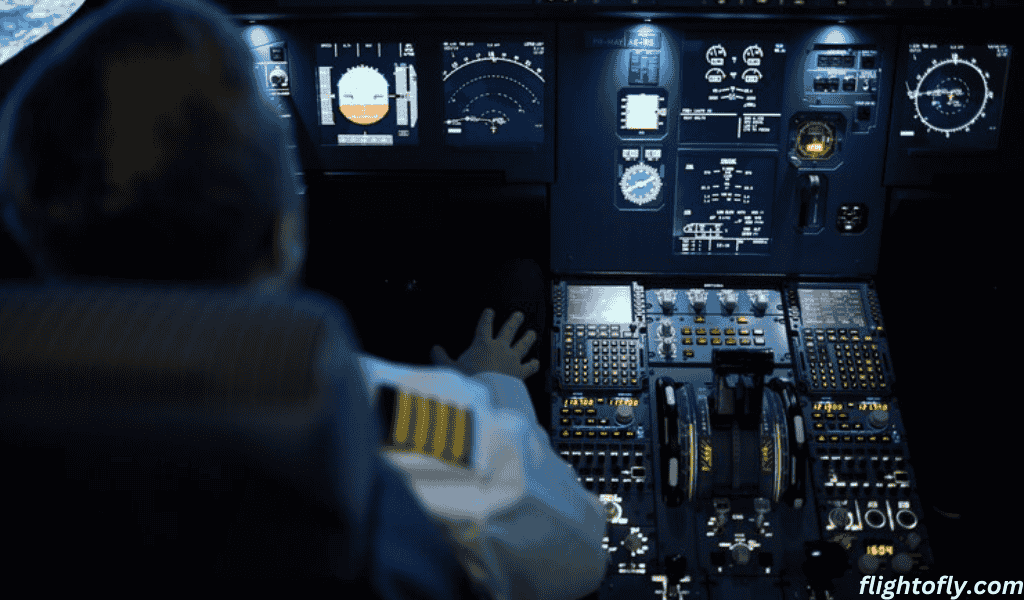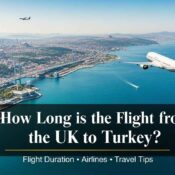
How to Get a Flight License: Requirements, and Training Tips
Flying an airplane is a thrilling experience, and getting a flight license makes it possible. Whether you dream of flying for fun or as a career, the process is straightforward. You need to meet age and medical requirements, choose a flight school, complete training, and pass written and practical exams.
Earning a flight license opens doors to adventure and new opportunities. It builds confidence, discipline, and skills that last a lifetime. With each flight, you move closer to your goal. Let’s explore the steps to make your flying dream a reality.
Check: Can You Be a Flight Attendant with a Felony?
What Is a Flight License?
A flight license is an official document. It lets you act as the pilot of an aircraft. Aviation authorities issue this license. The Federal Aviation Administration (FAA) manages it in the United States. In other countries, agencies like the European Union Aviation Safety Agency (EASA) or the Civil Aviation Authority (CAA) handle it.
This license proves you have the right training. It shows you passed written tests, flight tests, and health checks. It also shows that you can fly safely. Aviation rules keep people safe in the sky. These rules ensure that every pilot knows how to operate an aircraft. The flight license is your proof of skill.
This license is not a one-time achievement. Pilots often renew or update their licenses. They log more hours. They pass medical exams and stay current with the latest rules. These steps help them remain safe and confident in the cockpit.
Types of Flight Licenses
Flight licenses come in different levels. Each license fits a unique need. Before you start, you should know your goal. You should know which license matches your plan.
- Private Pilot License (PPL)
This license is popular for personal flying. You can carry passengers in single-engine airplanes for fun or travel. You cannot fly commercially and earn money with a PPL. It is your ticket to casual flying and weekend trips. - Commercial Pilot License (CPL)
This license allows you to earn money as a pilot. You can work for charter companies, cargo flights, or small airlines. You might tow banners or conduct aerial surveys. A CPL often leads to more advanced roles. - Airline Transport Pilot License (ATPL)
This license is the highest level for airplane pilots. It lets you captain big passenger jets. Large airlines want pilots with an ATPL. You need plenty of flight hours and advanced tests to earn this license. - Sport Pilot License
This license suits those who want light-sport aircraft flights. It often has fewer training hours. It comes with more limitations. For example, you might not fly at night or carry many passengers. - Recreational Pilot License
This license gives you a chance to fly small airplanes for short distances. It has more limits than a PPL. Some choose it if they plan simple, local flights. - Helicopter Licenses
These licenses follow similar steps but focus on rotary-wing aircraft. You can get a private helicopter license or a commercial one.
Requirements To Start Flight Training
Many people think flight training requires super abilities. That is not true. You need a few basic things. You also need a desire to learn. Review the table below to see the main requirements.
| Requirement | Details |
| Age | You can start training at 16 or younger. You must be at least 17 to earn a Private Pilot License. You must be at least 18 for a Commercial Pilot License. |
| Language Skills | You must read, write, and speak English well. Good English helps you talk with air traffic control. |
| Medical Certificate | You visit an approved aviation doctor for a health exam. You might get Class 1, 2, or 3, depending on your desired license. |
| Basic Education | You do not need a college degree for a Private Pilot License. Many airlines prefer at least a high school diploma, especially for commercial roles. |
| Time Commitment | You must invest study time for ground lessons and practice time for flight hours. |
Each requirement helps keep you and others safe. Age limits and medical rules ensure you are fit to handle the demands of flight. Clear language skills help you avoid confusion in the cockpit.
Choosing the Right Flight School
Flight schools guide you through the training process. They help you earn your flight license step by step. You need to pick a school that fits your budget and schedule.
- Research Local Options: Look at flight schools near you. Visit their websites. Compare their aircraft fleets. Check if they have well-maintained airplanes. Good airplanes mean safer lessons.
- Compare Costs: Flight training can cost a lot. Hourly rates for instructors and airplane rentals vary. Some schools charge a package fee. Others charge by the hour. Ask for detailed quotes. Make sure you understand what is included.
- Check Schedules: Some schools have flexible hours. They let you train on weekends or evenings. Others have strict schedules. Choose a place that fits your life. Consistency helps you finish faster.
- Instructor Experience: A great instructor makes learning fun and smooth. Ask about their qualifications and teaching style. Speak to current students. Listen to their stories.
- Simulators: Some schools have advanced flight simulators. Simulators help you practice emergencies or tricky maneuvers without risking a real aircraft. They also reduce costs. You spend fewer hours in the air for the same level of skill.
Ground School and Theoretical Knowledge
Flying is not just about moving an airplane in the sky. You need to know the rules, airspace details, and weather patterns. Ground school teaches these topics:
- Navigation: You learn to read aeronautical charts. You learn about routes, checkpoints, and navigation aids. You use tools like GPS. You also learn about old-school methods like VOR navigation.
- Aerodynamics: This subject shows how airplanes fly. It explains lift, drag, thrust, and weight. You learn how flaps and ailerons affect flight.
- Regulations: Each aviation authority has rules. You learn about required flight hours, airspace classes, and pilot privileges. You understand your limits as a student pilot or private pilot.
- Weather: Pilots pay close attention to weather. You learn to read forecasts. You learn about clouds, fronts, storms, and icing. This knowledge helps you decide when it is safe to fly.
- Radio Communication: You practice talking with air traffic control. You use clear terms. You keep it short to avoid confusion.
- Aircraft Systems: This part covers engines, fuel systems, and landing gear. It helps you spot mechanical problems.
You can study at the ground school in person or online. Many flight schools combine ground lessons with flight lessons. Consistent study helps you pass the written exam.
Flight Training and Practice
Flight training brings the theory to life. You sit in a real cockpit. You feel the controls. Learn step by step under the guidance of an instructor.
- Introductory Flights: Your first lesson might be an introductory flight. You take off with an instructor. You see how the airplane responds to small control movements. You learn about safety checks. You get a taste of flight.
- Structured Lessons: Each lesson builds on the last. You practice specific maneuvers. These include takeoffs, climbs, turns, descents, and landings. You repeat these until you feel comfortable.
- Solo Flights: One of the biggest moments is your first solo. Your instructor trusts that you can fly alone. You conduct takeoff, a circuit around the airport, and landing. This moment feels unforgettable.
- Building Hours: You need a set number of flight hours for your license. You log these hours in your logbook. You continue practicing under different conditions. Some conditions include cross-country flights, night flights, and instrument practice if you aim for advanced ratings.
- Use of Simulators: Simulators help when weather conditions are poor. They also teach you how to handle emergencies. You can pause the simulator and discuss mistakes with your instructor. This saves you money and increases safety.
- Instructor Feedback: Good instructors offer continuous feedback. They correct small errors. They help you form good habits. They challenge you with more complex scenarios as you progress.

Examinations and Tests
You must pass two main tests to earn your flight license. The first is the written test. The second is the practical test, also known as the check ride.
- Written Test:
After ground school, you sit for the written exam. It has multiple-choice questions about navigation, weather, regulations, and more. You can practice with online question banks. Consistent study helps you score well. - Practical Test (Checkride):
This test happens in an airplane. An examiner sits with you. First, you talk about flight plans. You show knowledge of rules and procedures. Then you go flying. The examiner checks your skills. You perform maneuvers. You handle landings and takeoffs. You show emergency procedures. If you pass, you earn your license.
Passing these tests feels rewarding. It proves that you have learned both theory and practice. It also shows your ability to operate an aircraft safely.
Costs and Budgeting
Flight training can cost a lot, but you can plan it well. You can save money with smart choices.
- Factors That Affect Costs:
- Location: Flight schools in busy cities charge more. Smaller airports often have lower fees.
- Type of Aircraft: Modern planes cost more to rent. Older planes might be cheaper. Still, they must be safe and well-maintained.
- Number of Hours: Each license needs a minimum number of flight hours. Some people need extra hours to pass. Extra hours add costs.
- Fuel Prices: Fuel costs can fluctuate. High fuel prices can raise training fees.
- Financing:
- Some students get loans from banks.
- Others use specialized flight training finance programs.
- A few flight schools help you set up payment plans.
- Scholarships exist. You find them through aviation groups or local clubs.
- Ways To Save:
- Study at home for the written test. This lowers the need for extra ground school hours.
- Use simulators for practice. They cost less than flying real planes.
- Plan your flights when the weather is good. Bad weather leads to canceled lessons.
- Stay consistent. Gaps in training lead to forgetting skills. Then you need extra practice.
You do not need to be rich to learn to fly. Good budgeting and planning help you manage the costs. The sense of accomplishment after earning your license feels priceless.
Career Paths After Getting Your License
Some people stop after a Private Pilot License. They fly on weekends or for family trips. Others see flying as a long-term career. Here are some paths you can take:
- Flight Instructor:
You can earn an instructor rating. Then you teach new students. You share your knowledge. You also build flight hours. Many airline-bound pilots choose to instruct as a way to boost experience. - Airline Pilot:
This path requires more hours and advanced ratings. You move from smaller planes to bigger aircraft. Airlines look for pilots with a Commercial Pilot License and an Airline Transport Pilot License. The hours are long, but the pay and travel perks can be good. - Charter or Cargo Pilot:
You can fly smaller planes that carry cargo or VIP passengers. This role might involve flexible schedules and different routes. You often land at smaller airports. You also gain solid experience. - Corporate Pilot:
Big companies hire pilots for private jets. You fly executives to meetings. You might travel worldwide. These jobs often come with competitive salaries. - Helicopter Pilot:
You can specialize in helicopters. You might fly news teams over cities. You might do search-and-rescue missions. You could also transport workers to oil rigs.
Each path offers unique challenges. The skies hold many possibilities. You decide which one fits your life goals.
Tips for Success
Your mindset and habits can shape your success. Follow these tips to stay on track:
- Stay Healthy:
Good health supports clear thinking. Exercise and a balanced diet help you stay alert. Avoid smoking and too much caffeine. You must pass regular medical exams. Stay fit to keep flying. - Practice Often:
Frequent practice keeps your skills fresh. If you skip flying for months, you might lose your edge. Consistent training saves money in the long run. You do not waste time relearning old lessons. - Join Aviation Communities:
Meet other pilots and enthusiasts. They share stories, tips, and job leads. You find groups at local airports or online forums. You form friendships that last a lifetime. - Keep Learning Beyond the License:
A license is just the start. You can add instrument ratings, multi-engine ratings, or floatplane ratings. Extra ratings boost your confidence. They also expand your flying options. - Embrace Challenges:
Flying can be tough. Weather changes. Equipment breaks. Schedules shift. Stay calm. Stay flexible. Each challenge makes you stronger. - Plan Carefully:
Use checklists. Plan each flight in detail. Gather weather info. Calculate fuel needs. Check your route. Good planning prevents mistakes. - Maintain a Positive Attitude:
Mistakes happen. Use them as learning moments. Listen to your instructor. Ask questions. Show that you want to improve.
These habits keep you safe and confident. They also build your reputation. People trust pilots who show dedication and skill.
Conclusion
A flight license transforms your life. It grants freedom and confidence. It lets you see the world from a new perspective. You might fly to small airports near dramatic lakes. You might join an airline and travel to distant countries.
Start by choosing the right license for your goal. Get your medical certificate. Then find a flight school that meets your needs. The study ground school topics like weather, navigation, and regulations. You spend flight hours mastering takeoffs, landings, and maneuvers. Pass the written exam. You pass the checkride. You feel a burst of pride when the examiner shakes your hand and calls you a pilot.
That feeling stays with you. It reminds you of your hard work and overcoming challenges. It reminds you that you earned your wings. Next time you see a plane passing overhead, you know you can be in that cockpit. You can chase the horizon. You can make flight your life. Reach out to a flight school today, and take the first step on this remarkable journey. The sky is waiting for you.
FAQs
1. What are the basic requirements for a flight license?
You must meet the minimum age requirement (typically 16 for a student pilot, 17 for a private pilot), pass a medical exam, and be fluent in English.
2. How long does it take to get a flight license?
It depends on the type of license and training schedule. A private pilot license (PPL) can take 3–6 months with full-time training, while a commercial license may take 1–2 years.
3. How much does it cost to get a flight license?
Costs vary by location and type of license. A private pilot license can range from $10,000 to $15,000, while a commercial license may cost $50,000 or more.
4. Do I need a degree to become a pilot?
No, a college degree is not required for most pilot licenses. However, major airlines may prefer candidates with a degree.
All Categories
Recent Posts
How Long Is the Flight from LAX to Tokyo?
Atlanta to New York Cheap Flights, Airlines, Prices & Travel Tips 2025
How Long is the Flight from the UK to Turkey?
Tags





